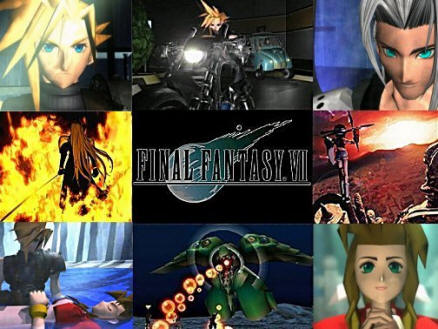
Japanese Culture and the Love Triangle
of Final Fantasy VII

*All hyperlinks provided take you to the website from which information and/or passages were obtained.

Introduction
Many unmarked spoilers exist on this site.
Final Fantasy VII, considered by many to be one of the finest RPG video games ever made, is a product of Squaresoft, which is well known for the creation of video games such as Final Fantasy Tactics, Chrono Cross, Final Fantasy VIII, and Final Fantasy X. The game was produced, directed, programmed, written, and tested by people native to Japan. If you look at the production and design credits at the end of the game, the names are almost exclusively Japanese. Here is a list of those people responsible for the creation of Final Fantasy VII:
Outside Contractor Coordinator: Hiroyosi Hamada
Animation Director: Hidetosi Omori
Battle Plan Director: Matsumura Yasushi
Map Plan Director: Hidetoshi Kezuka
Map Plan Co-directors: Takeshi Endo, Motoharu Tanaka,
Masato Yagi
Main Character Modeler: Hiroshi Arai
Battle Programmer: Hiroshi Harata
Character Programmer: Hiroshi Kawai
CD & Movie Programmer: Shun Moriya
Sound Engineer: Eijii Nakamura
MA & Recording Engineer: Kenji Nagashima
Story by: Yoshinori Kitase, Kazushige Nojima
Original story by: Tetsuya Nomura, Hironobu Sakaguchi
Exective Producers: Tetsuo Mizuno, Tomoyuki Takechi
Testers: Andy Hsu, Yoshinobu Matsuo, Sean Camanyag, Stanford Ng, Clayton S. Chan, Vangthonhoua Moua, Terry Jung, Seth E. Williams, Fernando Bustamante
Producer: Hironubu Sakaguchi
Director: Yoshinori Kitase
Main Programmer: Ken Narita
Graphic Director: Tetsuya Nomura
Battle Visual Director: Tetsuya Nomura
Music Composer: Nubuo Uematsu
Art Director: Yusuke Naora
Image Designer: Yoshitaka Amano
CG Supervior: Kazuyuki Hashimoto
Movie Director: Motonori Sakakibara
Character Modelling Director: Tomohiro Kayano
Battle Planner: Yasuyuki Hasebe, Satoru Tsuji
Event Planners: Tsukasa Fujita, Keisuke Matsuhara
Effect Programmers: Hiroshi Harata, Satoshi Ogata
Battle Programmer: Akihiro Yamaguchi
Sound Programmer: Minoru Akao
Special Magic Effect Director: Shintaro Takai
Battle Stage Director: Akira Fujii
Graphic Art Director: Htoshi Sasaki
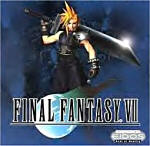
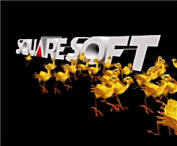
Given the fact that Final Fantasy VII was created almost exclusively by people native to Japan, it only goes to reason that cultural factors should be considered when making an interpretation of the game. The cultural background of the people who made this game must have played an influence on the creation of the story. Many websites exist which interpret the storylines of Japanese anime and magna in terms of Japanese culture. The same kind of influence exists in video games such as Final Fantasy VII. Culture influences behavior as well as the meaning of certain words and phrases, and therefore no interpretation of dialogue or character actions in the story of Final Fantasy VII can be fully accurate unless the influence of Japanese culture is considered.
Japanese Language and Culture: Haji
Non-verbal symbolism and imagery is also a very important part of anime, manga,
and video games produced in Japan. The artists will often choose to use a
certain color, item, animal, or event based on its symbolic meaning within
Japanese culture. Many of these themes, elements, and symbolisms are related to
each other in how they are used and what they mean. Understanding the meaning of
such symbolism is also important when making an interpretation of Final Fantasy
VII.
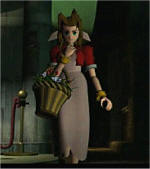
One of the main sub-plots of Final Fantasy VII is a Love Triangle between the main character, Cloud, and two women who help him battle the arch enemy, Sephiroth. Since the game’s release in 1997, a main dispute in the Western audience has been which woman Cloud truly loved, Aerith or Tifa. Many people have tried to analyze the Love Triangle in Final Fantasy VII from a Western perspective, where the answer remains elusive since no declaration or demonstration of love from a Western perspective is conclusively shown within the course of the game. Squaresoft even seemed to be aware of how confusing the Love Triangle was for the Western audience, which is not surprising, given the amount of debate on this subject. Upon the release of Kingdom Hearts, Tetsuya Nomura even stated this in an interview with the Official US Playstation Magazine in October, 2002, issue 61, page 139-140: "But if you play Kingdom Hearts, toward the end, some of the questions about Cloud and Aeris in FFVII might be answered."
Kingdom Hearts
by Eternal Yuna
The release of Kingdom Hearts in 2001 by Squaresoft and Disney renewed interest in the true love of Cloud's life. The game features cameos from many of our favorite Final Fantasy characters, including Cloud, Cid, Sephiroth, Yuffie and Aerith. The story of Kingdom Hearts is one of worlds splitting apart and people losing one another, as Cloud lost Aerith in Final Fantasy VII. Throughout the game of Kingdom Hearts, each character faces his or her own conflict, but it all comes back to light versus dark. The main theme of Kingdom Hearts is "Hikari", or “Light”, by Utada Hikaru.
soba ni irukara
kimi to iu hikari ga watashi wo mitsukeru
mayonakani
Because you're by my side
The light known as "you" finds me,
In the middle of the night
- Utada Hikaru, Hikari (Light)
In the
game, Cloud teams up with the evil Hades in hopes that Hades will assist him
with his quest. There are a few cutscenes in which Cloud explains to the main
character, Sora, that he is looking for someone, for his "light". Sora mentions
that he is looking for his "light" as well, and Cloud warns Sora never to lose
sight of it.
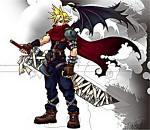
Sora: So why did you go along with [Hades], anyway?
Cloud: I'm looking for someone. Hades promised to help. I tried
to exploit the power of darkness, but it backfired. I fell into
darkness, and couldn't find the light.
Sora: You'll find it. I'm searching, too.
Cloud: For your light? Don't lose sight of it.
This is a bit of foreshadowing for the game's actual ending. During the credits roll, there is a series of short clips that grant closure for all things and all characters within Kingdom Hearts. Disney characters like Aladdin and Jasmine are finally united, for example. The second clip is one of a castle library, where Aerith is talking with Yuffie and Squall/Leon. Aerith turns to the door, and in walks Cid with Cloud at his side. Cloud approaches Aerith and looks down at her. In a classic Final Fantasy VII pose, Aerith leans forward to look into Cloud’s eyes.

In the end, Cloud finds his light… Aerith.
However, the release of Kingdom Hearts failed to make the Love Triangle clear to the Western audience. Some have argued that no conclusion can be drawn about Cloud and Aerith’s relationship from this, since Kingdom Hearts is a separate game with its own set of characters and no relation to previous stories in the Final Fantasy series. Others have argued that there is no conclusive statement from Cloud within Kingdom Hearts saying that Aerith is indeed his “light”. As a result, the debate over which woman Cloud loves has continued.
Some of the confusion about the Love Triangle may be answered by analyzing Cloud and Aerith’s relationship from the perspective of Japanese culture, as well as gaining insight into the intention of the creators. As stated above, Final Fantasy VII was written, produced, directed, programmed, and tested by natives of Japan, who would be influenced by the culture in which they live. Culture influences behavior as well as the meaning of certain words and phrases, which can be lost in translation. The meaning of symbolism and imagery used in one culture may be unclear to other cultures, as well. This is an exploration of the cultural aspects which may have influenced both the understanding of the Love Triangle and the portrayal of Cloud and Aerith’s love within Final Fantasy VII.
Evidence of Japanese Cultural Influence
One of the first evidences seen of Japanese cultural influence in Final Fantasy VII is in Aerith’s occupation as a flower girl. It is very common to see women with their baskets full of flowers for sale on bamboo poles or on their bicycles in Japan.
The Japanese love flowers. Flowers are also predominant in their art. Ikebana is the art of Japanese flower arranging, which has organizations all over the world. Another art form and cultural tradition of the Japanese is the garden. Japanese gardens originated from attempts to incorporate, in the proximity of buildings or in an urban setting, the sorts of natural scenery one might find near sacred Shinto precincts.
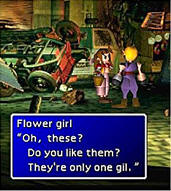
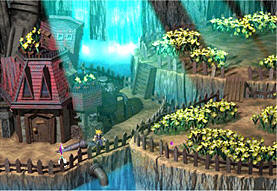
Flowers and flower blossoms are traditionally associated with femininity and womanhood, and are often used within anime and manga to represent love, a girl blooming into womanhood, a girl opening up to the world around her, and other images of this sort.
Another way in which the evidence of Japanese culture is seen in Final Fantasy VII is that the characters are pictured as Westerners. The Japanese customarily use characters of Western descent in film, TV programs, and such when there is violence or conflict involved in the plot. The Japanese do not like to portray themselves in situations of conflict, since the Japanese feel that conflict should be avoided at all costs.
Japanese Culture: A Primer for Newcomers
One very common Japanese symbol used in a significant part of Final Fantasy VII is a carp. A carp was found swimming in a small pool that Cloud had to pass through later in order to find his way down to the shrine where Aerith was praying in the Forgotten City. The carp has long been a symbol of strength and courage in Japan.
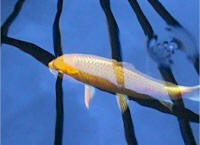
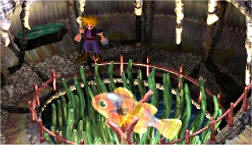
The Japanese consider the carp to be the most spirited of fish, so full of energy and power that it can fight its way up swift-running streams and cascades. Because of its strength and determination to overcome all obstacles, it stands for courage and the ability to attain high goals. The carp is a symbol used to encourage manliness and the overcoming of life's difficulties leading to consequent success.
Festivals and Holidays in Japan
Cloud will obviously have to deal with such issues once he passes through the pool in which the carp is found swimming. He will have to overcome the difficulty of Aerith’s death, as well as the difficulties of dealing with his past, Sephiroth’s influence on his mind, Sephiroth calling Meteor, fighting the Weapons, fighting the opposition of Shinra, and a host of other things. He needs to find the courage and strength and determination within himself to deal with these issues in order to be successful in his quest to defeat Sephiroth.
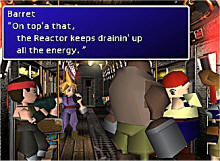 A
recent trend of environmentalism found in anime, magna, and video games produced
in Japan is also seen in Final Fantasy VII. One of the primary tenets of Shinto,
a main religion in Japan, is to live in accordance with nature. Nature is
sacred, and so contact with nature means that a person is in contact with the
gods. Natural objects are worshipped as sacred spirits in the Shinto religion,
and its philosophy suggests that humans should work within nature. This
belief is reflected in some of today's modern manga and video games produced in
Japan, which take on the issue of saving the Earth from exploitation and preserving the life-forces of the planet. Final Fantasy VII
follows a similar vein, condemning the greed of a company which is sucking the
very life out of the Planet. Games such as Final Fantasy VII, The Secret of Mana,
and Illusion of Gaia subtly imply that the world might just be better off
without mighty modern technology.
A
recent trend of environmentalism found in anime, magna, and video games produced
in Japan is also seen in Final Fantasy VII. One of the primary tenets of Shinto,
a main religion in Japan, is to live in accordance with nature. Nature is
sacred, and so contact with nature means that a person is in contact with the
gods. Natural objects are worshipped as sacred spirits in the Shinto religion,
and its philosophy suggests that humans should work within nature. This
belief is reflected in some of today's modern manga and video games produced in
Japan, which take on the issue of saving the Earth from exploitation and preserving the life-forces of the planet. Final Fantasy VII
follows a similar vein, condemning the greed of a company which is sucking the
very life out of the Planet. Games such as Final Fantasy VII, The Secret of Mana,
and Illusion of Gaia subtly imply that the world might just be better off
without mighty modern technology.
Environmentalism in Manga and Anime
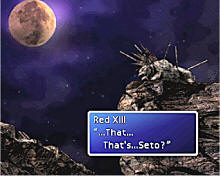 Another
important tenet of the Shinto religion is tradition and the family. The family
is seen as the main mechanism by which traditions are preserved. Their main
celebrations relate to birth and marriage. Tradition must be passed down from
generation to generation. Therefore, the family is extremely important, since it
is the family that transmits Shinto beliefs.
Another
important tenet of the Shinto religion is tradition and the family. The family
is seen as the main mechanism by which traditions are preserved. Their main
celebrations relate to birth and marriage. Tradition must be passed down from
generation to generation. Therefore, the family is extremely important, since it
is the family that transmits Shinto beliefs.
In Final Fantasy VII, this reverence for the family can be seen in Barrett and Marlene’s love for one another, in Red XIII’s love for Bugenhagen and his parents, as well as in Yuffie’s relationship with her father. Despite Yuffie’s quarrels with Lord Godo, their underlying affection for one another can be seen after the quest in Wutai when Yuffie climbs the Pagoda.
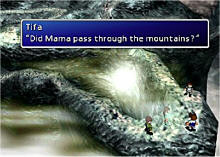 After
her mother passed away, Tifa wanted to visit with her spirit on Mt. Nibel. For
the Japanese, mountains have long been seen as an intermediary step between this
world and the next for spirits on their way to heaven. Customs such as meeting a
spirit at the bank of a mountain stream are still practiced widely in certain
mountain villages. There are also shamans called the Itako on Mt.
Osorezan, which is considered one of Japan’s most holy mountains and pilgrimage
sites. The Itako practice kuchiyose, a custom of communing with
the dead and becoming a mouthpiece for ancestral spirits.
After
her mother passed away, Tifa wanted to visit with her spirit on Mt. Nibel. For
the Japanese, mountains have long been seen as an intermediary step between this
world and the next for spirits on their way to heaven. Customs such as meeting a
spirit at the bank of a mountain stream are still practiced widely in certain
mountain villages. There are also shamans called the Itako on Mt.
Osorezan, which is considered one of Japan’s most holy mountains and pilgrimage
sites. The Itako practice kuchiyose, a custom of communing with
the dead and becoming a mouthpiece for ancestral spirits.
Aomori: A Day on Fear Mountain
Cait Sith’s occupation as a fortuneteller is another example of Japanese cultural influence in Final Fantasy VII. Fortune telling is a big business in Japan, where there is a long tradition of curiosity and trust in palm reading and fortune telling. Many Japanese rely on fortune telling when they want to know their future, to make decisions, or to prevent bad luck. There are many methods of fortune telling to choose from, such as teso, omikuji, and seimeihandan. At midnight, many fortunetellers appear on the street in sections of Tokyo, and numerous people line up to speak with their favorite fortunetellers as soon as they set up their desks.
Japanese Fortuneteller Stella Kaoruko
Japanese Fortune Navigator Takashi Fukushima
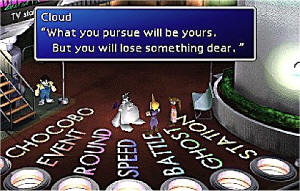
![]()
~ The Love Triangle of Final Fantasy VII is discussed further at Destiny Fulfilled: Cloud and Aerith's Love